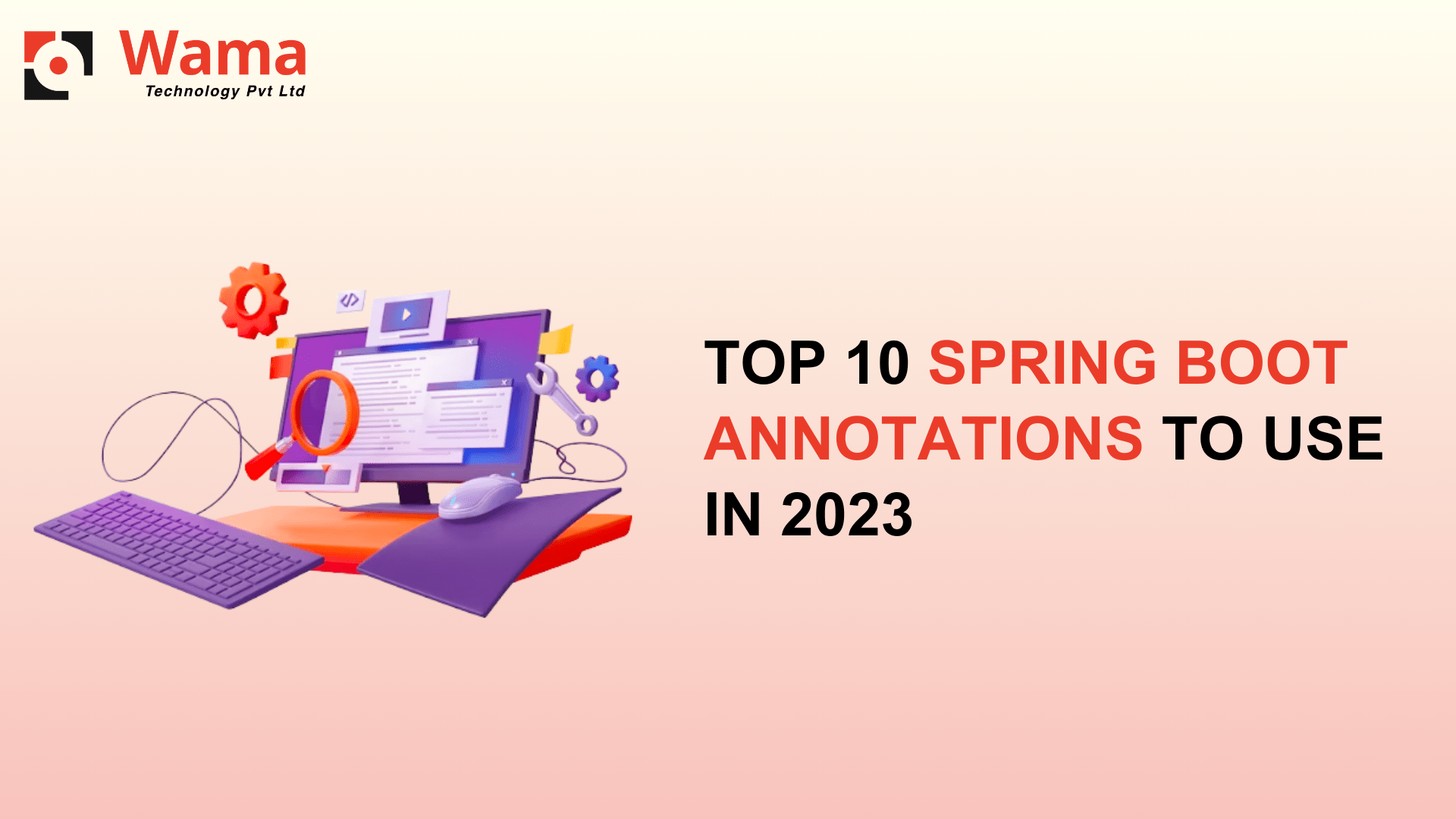In the dynamic realm of Java development, Spring Boot continues to stand out as a go-to framework for building robust and scalable applications. As we step into 2023, mastering the use of Spring Boot annotations is crucial for developers aiming to stay at the forefront of innovation. In this comprehensive guide, Wama Technology explores the top 10 Spring Boot annotations that will shape the landscape of Java development in the coming year.
- @RestController
At the heart of modern web development lies the need for creating RESTful web services. The @RestController annotation in Spring Boot is a powerhouse, simplifying the process of building REST APIs. Wama Technology recommends embracing this annotation to effortlessly define and deploy RESTful services, enhancing the efficiency of your applications.
- @SpringBootApplication
Considered the cornerstone of every Spring Boot application, the @SpringBootApplication annotation signifies the starting point of your project. Wama Technology emphasizes the significance of understanding and using this annotation to streamline the configuration of your application, enabling a smoother development and deployment process.
- @Autowired
In the realm of dependency injection, the @Autowired annotation takes center stage. As a key player in the Spring framework, it facilitates the automatic injection of beans, reducing manual wiring efforts. Wama Technology encourages developers to leverage this annotation for efficient management of dependencies, fostering a modular and maintainable codebase.
- @RequestMapping
For mapping HTTP requests to specific methods in a controller class, the @RequestMapping annotation proves indispensable. In 2023, Wama Technology predicts an increased reliance on this annotation to handle diverse client requests effectively. Mastering its usage empowers developers to create versatile and well-organized web applications.
- @Service
When it comes to segregating business logic within your application, the @Service annotation is the key. Wama Technology advocates for the strategic use of this annotation to mark classes that encapsulate core functionalities. This promotes a modular architecture, making code maintenance and testing more straightforward.
- @Repository
As databases play a pivotal role in modern application development, the @Repository annotation gains prominence. By designating a class as a repository, developers signal its responsibility for data access operations. Wama Technology recommends incorporating this annotation for effective management of database-related tasks in your Spring Boot projects.
- @ComponentScan
Efficiency in component scanning is vital for large-scale applications. The @ComponentScan annotation instructs Spring to scan for annotated components, such as controllers, services, and repositories. Wama Technology advises developers to harness the power of this annotation to enhance the modularity and scalability of their applications.
- @Configuration
As developers strive for greater control over the configuration of their applications, the @Configuration annotation comes into play. Wama Technology encourages its use to define configuration classes, providing bean definitions and other configuration options. This annotation empowers developers to fine-tune their application settings with precision.
- @PathVariable
Dynamic and data-driven applications often require the extraction of values from the URI. The @PathVariable annotation in Spring Boot serves this purpose, allowing developers to capture dynamic values effortlessly. Wama Technology suggests integrating this annotation to enhance the flexibility and responsiveness of your applications.
- @RequestParam
Dealing with query parameters and form data is a common task in web development. The @RequestParam annotation simplifies this process, making it easy to extract values from the query string or form data. Wama Technology highlights the importance of mastering this annotation for efficient handling of user input in Spring Boot applications.
Real-world Applications: Case Studies
To illustrate the practical usage of these annotations, Wama Technology presents real-world case studies. We delve into successful projects where these annotations played a pivotal role, showcasing how they contribute to the development of scalable, maintainable, and innovative applications.
Conclusion
In the evolving landscape of Spring Boot development, staying ahead requires a deep understanding and effective utilization of key annotations. Wama Technology believes that mastering these top 10 Spring Boot annotations will not only enhance your development skills but also contribute to the creation of resilient and feature-rich applications in 2023 and beyond. As we embark on another year of technological advancements, let these annotations be your guiding tools in the journey of Java development excellence.
